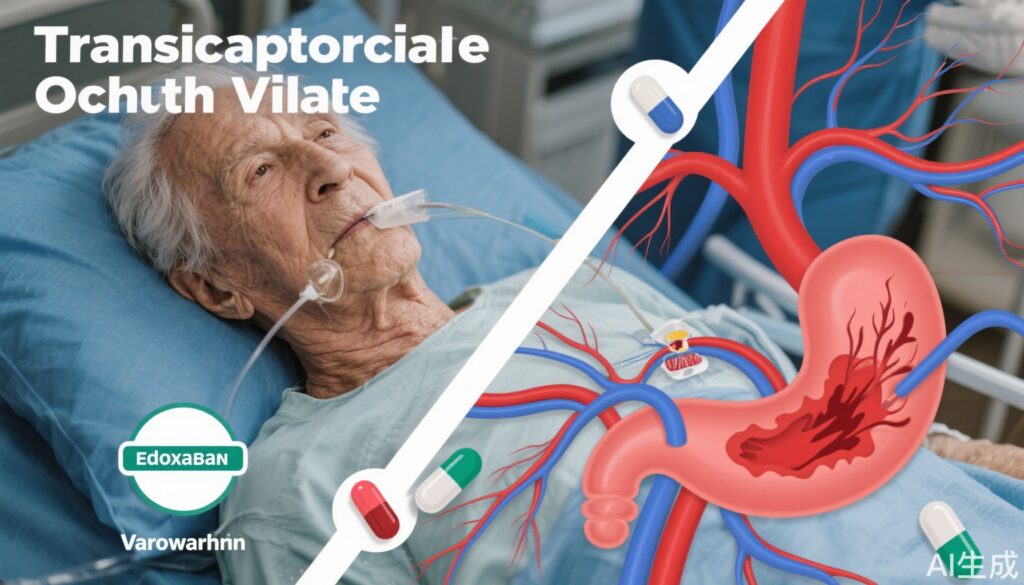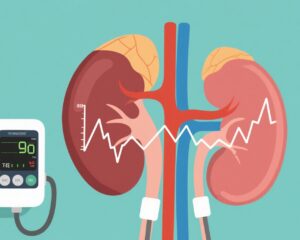Background and Disease Burden
Non-vitamin K oral anticoagulants (NOACs) have become the preferred therapy over vitamin K antagonists (VKAs) in patients with nonvalvular atrial fibrillation (AF) due to their favorable safety profiles and ease of use. However, concerns persist regarding a potentially increased risk of major gastrointestinal bleeding (MGIB) with NOACs compared to VKAs. This risk is particularly critical in patients who have undergone transcatheter aortic valve replacement (TAVR), a population characterized by advanced age and frailty. MGIB episodes in this cohort often lead to worsened clinical outcomes, including an increased risk of mortality. Understanding the incidence, predictors, and consequences of MGIB in this high-risk group is essential to optimize anticoagulation strategies post-TAVR.
Study Design
The ENVISAGE-TAVI AF trial is a randomized clinical study designed to compare the effects of edoxaban, a NOAC, versus standard care with vitamin K antagonists in patients with AF following successful TAVR. This specific analysis included 1377 patients who received at least one dose of the study medication. The study collected detailed demographic, clinical, and procedural data. Incidence rates of MGIB were assessed, and Cox multivariable regression was employed to identify independent predictors of MGIB events during the treatment period.
Key Findings
Among the 1377 enrolled patients, 83 (6.0%) experienced MGIB. Of these, 56 patients (67.5%) were treated with edoxaban, suggesting a higher bleeding risk associated with this medication compared to warfarin. Several characteristics differed between patients who developed MGIB and those who did not, including:
– A higher frequency of percutaneous coronary intervention (PCI) within 30 days prior to TAVR (9.6% vs. 4.2%; P=0.03).
– An elevated mean left ventricular ejection fraction (58.0% ± 10.4 vs. 55.3% ± 11.5; P=0.04).
– Increased prevalence of carotid artery disease (13.3% vs. 6.6%; P=0.04).
Multivariable Cox regression identified several independent predictors for MGIB:
– Use of edoxaban without dose adjustment compared to VKA use (P=0.003).
– Active smoking status (P=0.01).
– Low baseline hemoglobin levels (P<0.0001).
– PCI within 30 days before TAVR (P=0.01).
Safety profiles demonstrated that MGIB in this patient group is a serious complication associated with increased morbidity. The data underscore the necessity for careful patient selection and possibly adjusted dosing of edoxaban when used post-TAVR.
Expert Commentary
This subanalysis highlights a crucial clinical dilemma: while NOACs, including edoxaban, offer numerous benefits over VKAs, their gastrointestinal bleeding risk cannot be overlooked, especially in patients with AF after TAVR who possess multiple bleeding risk factors. The identification of modifiable risk factors such as smoking and recent PCI offers avenues for optimizing patient management. Clinicians must consider individualized anticoagulation strategies and weigh thromboembolic protection against bleeding risks. Notably, the study raises questions about the appropriateness of standard NOAC dosing in this fragile population.
Limitations of this analysis include its on-treatment cohort nature, which may introduce treatment selection biases, and the inability to fully evaluate long-term outcomes or mechanisms underlying MGIB. Further research should explore strategies such as adjusted anticoagulant dosages or protective co-therapies to minimize bleeding risks.
Conclusion
Major gastrointestinal bleeding remains a significant risk for patients with AF undergoing TAVR, especially those treated with edoxaban compared to warfarin. Approximately 6% of patients experienced MGIB, with identifiable predictors including medication choice, smoking, anemia, and recent PCI. Early recognition and management of these risk factors are paramount for improving clinical outcomes. These findings advocate for personalized anticoagulant therapy post-TAVR, balancing efficacy with safety to reduce bleeding complications and associated mortality.
References
Dangas GD, Unverdorben M, Nicolas J, Hengstenberg C, Chen C, Möllmann H, Jin J, Shawl F, Yamamoto M, Saito S, Hambrecht R, Duggal A, Van Mieghem NM. Comparing Major Gastrointestinal Bleeding in Patients Receiving Edoxaban Versus Warfarin After Transcatheter Aortic Valve Replacement: Results From the Randomized ENVISAGE-TAVI AF Trial. J Am Heart Assoc. 2025 May 20;14(10):e033321. doi: 10.1161/JAHA.123.033321. Epub 2025 May 15. PMID: 40371611; PMCID: PMC12184617.
ClinicalTrials.gov Identifier: NCT02943785



